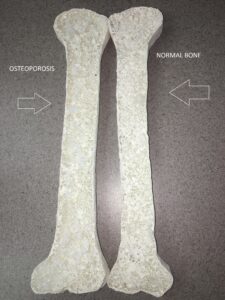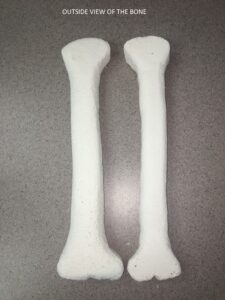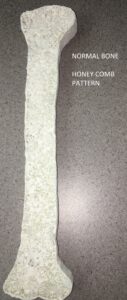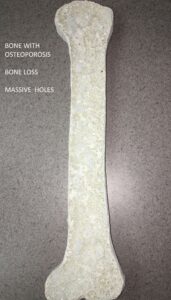



I decided to do my STEAM project on the cause and affects of Osteoporosis. I created my project to show a normal healthy femur and one that shows the effects of Osteoporosis inside of the bone. Illustrating the damage bone loss can have in severe cases, and what it would look like.

https://mail-attachment.googleusercontent.com/attachment/u/1/?ui=2&ik=468e07acc2&attid=0.1&permmsgid=msg-f:1684443043767577481&th=176058061424eb89&view=att&disp=safe&saddbat=ANGjdJ_aoHen-8ekLd_58xCTuMvHLd2rJMmT3ynUIArQaJ2Sm2Jbqs8I4kN_mmH342rPfXU1FCukt1_Tl53M5FTi4J6wfqCjrgFyHeAsThEjHiqF7fVyiV8Jbfhi2EhXs2eDUwCQ1roxQlj0SV-6h3-ygY77SeBU4KfWxBG8ct90D8UVoLnjblsTIoaVC9XbE7XkH8hIO2OF5N8HTLHR8YF5yi0tLWiUrSq5MW4Fh2_ygYG97DYPYnf90QdgtQnq7Dmpp6eo86773AudrQHYuzYeLr0QZgzrNW0Q82SMqgDlTbfbRaiE7x6PD6AaE1ZgY67MXwr9oAmnAsueuzbvNQh1-uqqaQhkI10p61spqyZ1-ne8lYOvmpULj29yEx1pwsSv81m1pnF1Tx2RXhzpIKrT6zG3N2ESk8GNU1QkVyEwPMSMuAfCdY9fapyxjVwV0y2wl0n31iGisl4WTjnB0cxF-M0alHFtoXC6pNYn-SZGgeVM2ULwraNBgu-66tq7QS22Y9_LnNcm81TlsG8tBasez_zBYOprdoGe8n8EZA1E5IrBxkY6ZxHC3vbquQFLTU_3cHp3ztZLHv1HEMSsn6MClW9-gXv5nxS-JGaZ9u5ochEUrcweh-wkqlLfnADqgmdW-qAWQ-3-UnZ8FmrUzR7yWiMtHOswcGt09DXUBKwlRsWho2F441o-BdLVnx0
Tyler chose to focus on the causes and effects of the disease osteoporosis. He starts by explaining the cellular systems in bone formation and production. The cells involved are osteoclasts, which are involved in the breakdown of bone, and osteoblasts, which are responsible for the formation of new bone. Osteoporosis happens when the osteoclasts begin to break down more bone than can be replenished and rebuilt by the osteoblasts. This causes weakness and makes the bones much more brittle and prone to fracture. Tyler shows models of bone that are both normal and affected by osteoporosis. The difference is clear as the osteoporitic bone has a much less dense structure than the normal bone. He addresses the fact that any person can be affected by this disease, regardless of age, gender, or ethnicity. Women are at a higher risk of developing osteoporosis simply because of their biology, especially hormones. However, anyone can be affected because of their diet and overall lifestyle. Obese people can develop this because of poor diet and limited exercise, as well as people who grew up eating foods lacking in certain minerals, proteins, and vitamins or people who are affected by eating disorders. Tyler also notes that a variety of long-term medications used to treat cancer, neurological disorders, type two diabetes, thyroid disorders, and some other health issues can cause osteoporosis. This can be from the medication inhibiting the production of osteoblast cells to inhibiting the absorption of calcium. Tyler’s essay does an excellent job of educating on the process of bone formation and how it can be affected by lifestyle and biological factors, as well as offering starting solutions for someone who may be at risk to develop osteoporosis.